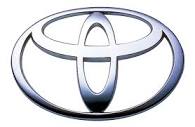T100 Pickup 4WD V6-3.4L (5VZ-FE) (1995)
/Page-1109002.png)
NOTE: R-134a refrigerant is not compatible with R-12 refrigerant. Even small amounts of R-12 in a R-134a system can cause lubricant
contamination, improper A/C performance or compressor failure. Never add R-12 to an R-134a system.
New service ports have been added to the compressor to prevent charging the system with R-12 refrigerant. R-134a systems require a special
compressor lubricant. Use ND8 PAG compressor oil part No. 82300102 or equivalent when servicing system.
NOTE: Avoid breathing A/C R-134a refrigerant and lubricant vapor or mist. Exposure may irritate eyes, nose and throat. Use only
approved service equipment to discharge R-134a systems.
Air conditioning systems are extremely sensitive to moisture and dirt. The importance of clean working conditions is extremely important, as the
smallest particle of foreign matter in an air conditioning system will contaminate the refrigerant, causing rust, ice or damage to the compressor. For
this reason, all replacement parts are sold in vacuum sealed containers and should not be opened until they are to be installed in the system. If, for
any reason, a part has been removed from its container for any length of time, the part must be completely flushed using only R-134a to remove
any dust or moisture that may have accumulated during storage. In cases of collision repairs where the system has been open for any length of
time, the entire system must be purged completely and a new receiver-dehydrator must be installed because the element of the existing unit will
have become saturated and unable to remove any moisture from the system once the system is recharged.
When making gauge connections, purge the gauge lines first by cracking the charging valve and allowing a small amount of refrigerant to flow
through the lines, then connect the lines immediately.
Cleanliness is especially important when servicing compressors because of the very close tolerances used in these units. Consequently, repairs to
the compressor itself should not be attempted unless all proper tools are at hand and a virtually spotless work area is provided.
BRAKE FLUID WARNING
Do not reuse any old brake fluid, as it has contaminants and contains water which lowers the boiling point of the fluid. Be careful not to spill any
brake fluid on any painted surfaces. If any brake fluid is spilled onto painted surfaces, immediately flood the area with lots of water.
FUEL PRESSURE RELEASE
Before working on the fuel system, disconnect the negative (-) terminal cable from the battery.
1. When disconnecting the high pressure fuel line, a large amount of gasoline may come out so observe these procedures:
a. Put a container under the connection.
b. Slowly loosen the connection.
c. Disconnect the connection.
d. Plug the connection with a rubber plug.
